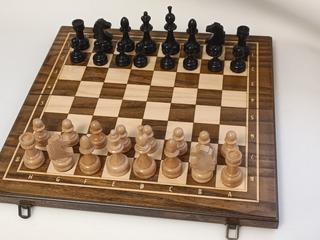While explosive tactical combinations often steal the spotlight, the silent, steady hand of positional play is what truly separates the masters from the amateurs. Positional chess is the art of strategic maneuvering, improving the potential of your pieces, and creating subtle, long-term advantages. It's about understanding the soul of the position, not just the immediate threats. Where tactics are a sharp sword, positional play is the slow, inexorable tightening of a python's coils.
Pillar 1: Piece Activity and Coordination
The single most important concept in positional chess is ensuring your pieces are active. An "active" piece is one that controls important squares, restricts the opponent's pieces, and participates in the overall plan. A knight on the rim is a tragedy; a knight on a centralized, supported outpost is a monster.
Coordination
is the next level. It’s not enough for individual pieces to be active; they must work together like a well-oiled machine. Your rooks should control open files, your bishops should slice across key diagonals, and your queen should support the efforts of all other pieces. A common positional goal is to connect your rooks, a sign that your initial development is complete and your army is ready for coordinated action.
Pillar 2: Pawn Structure as the Skeleton
Aron Nimzowitsch famously called pawns "the soul of chess." The pawn structure is the skeleton of the position, defining the strategic landscape for the entire game. Understanding its nuances is critical.
-
Pawn Weaknesses:
Isolated, doubled, and backward pawns are long-term liabilities. They are difficult to defend and become prime targets for your opponent. A key positional goal is to create such weaknesses in the enemy camp while avoiding them in your own.
-
Pawn Chains:
A chain of pawns (e.g., on d4 and e5) can be a formidable weapon, controlling vast territory. The strategy often revolves around attacking the base of the opponent's pawn chain.
-
Open and Closed Positions:
A position with few locked pawns is "open" and generally favors bishops and rooks. A "closed" position, with interlocked pawn chains, is the natural habitat of knights, which can jump over other pieces.
Pillar 3: The Concept of Prophylaxis
Prophylaxis, a term popularized by Nimzowitsch, means "preventive medicine." In chess, it is the art of anticipating and preventing your opponent's plans before they can even materialize. Instead of only asking, "What is my best move?", a positional player constantly asks, "What does my opponent want to do, and how can I stop it?"
This could be a simple move like playing `h3` to prevent a back-rank checkmate or a pin from an enemy bishop on g4. Or it could be a deep strategic maneuver, like repositioning a knight to a square where it will neutralize the opponent's most active piece. Prophylactic thinking is a hallmark of a mature, sophisticated chess understanding.
Pillar 4: The Principle of Two Weaknesses
This principle, articulated by World Champion Mikhail Botvinnik, is a powerful winning technique. If your opponent has only one weakness, they can often concentrate all their defensive resources to protect it. However, if you can create a second weakness on the other side of the board, their forces will be stretched too thin.
A classic example is having an advantage on the queenside. You launch an attack there, forcing the opponent to shift their pieces to defend. Once their army is committed, you swiftly switch the point of attack to the kingside. The opponent, unable to redeploy their forces in time, will often collapse on one of the two fronts. This is the essence of converting a positional advantage into a decisive victory.
Conclusion: A Lifelong Journey
Unlike tactical puzzles that often have a single, clear solution, positional chess is a world of subtleties and shades of gray. It requires patience, deep calculation, and an intuitive feel for the harmony between your pieces. It is not something that can be mastered overnight, but a lifelong journey of learning and appreciation. By focusing on these core pillars, you can begin to unlock the secrets of the grandmasters and elevate your game to a whole new level.


